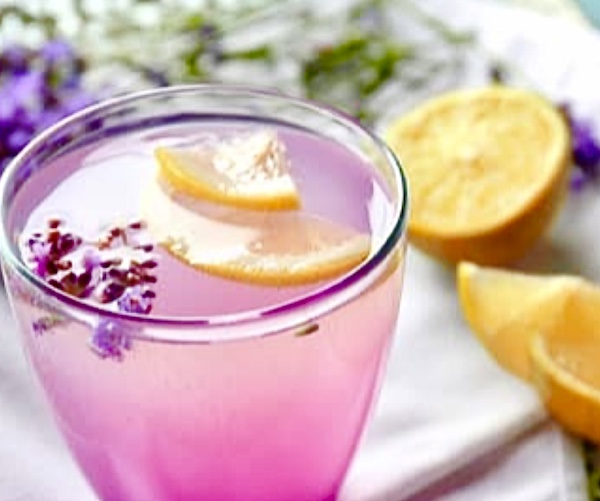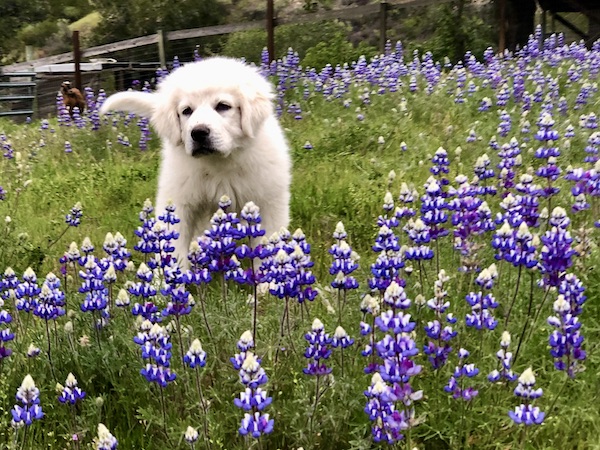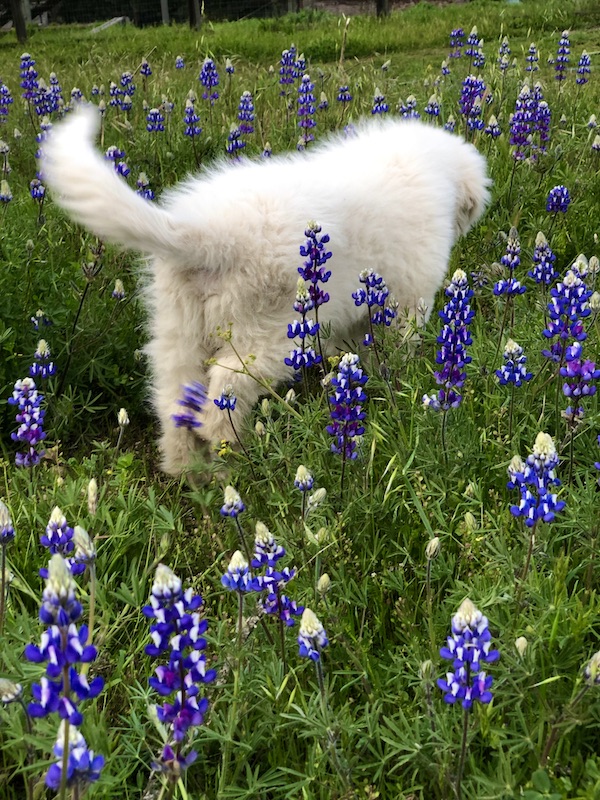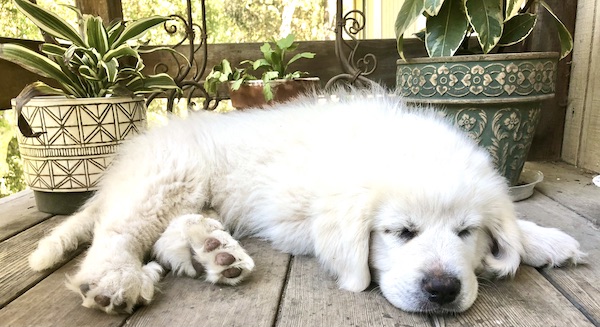-
How to Make Fresh Jasmine Blossom Honey

The jasmine is starting to bloom and I am in heaven. The small, delicate white blossoms are so pretty, and is there any fragrance more intoxicating? The scent is said to bring a state of balance and serenity to the soul. It is definitely calming. This recipe for jasmine blossom honey will knock your socks off. It’s quite simple, and oh so yummy.
Ingredients
1 cup filtered honey
2 cups jasmine blossoms*

Use only organic, food grade flowers. The best time to pick jasmine is early in the morning when the blossoms have barely opened. At this time, they will have their maximum fragrance. Make sure to remove all stems and leaves from the blossoms and either compost or throw them away.
Directions
Heat 1 cup of water in a double boiler (or use a heatproof bowl over a water filled saucepan). Bring water to a boil, then add honey to the bowl and stir until liquid. Add the flowers to the honey and stir gently, then remove from heat. Let steep for 1-2 hours, then warm until liquid again. Strain out the flowers using a mesh sieve.

The honey can be kept for up to one week in the refrigerator. It is delicious with yogurt, cheese, fresh fruit, and tea. You may also like Fresh Figs With Cheese, Honey & Thyme and Simple & Delicious Lavender Lemonade. Wishing you peace, love, happiness, & beautiful vistas!
*Ensure that you are using true jasmine from the Oleaceae, or olive family. There are some false jasmines that are highly toxic. These include Day Blooming, Night Blooming, Carolina and Cape jasmine. For more information see false jasmine.
-
Simple & Delicious Lavender Lemonade

Spring is here in Monterey County, and that means the lavender is in full bloom. Seeing the hillside covered in these glorious purple blooms is an amazing treat, and their scent is so heavenly. I love that lavender is a perennial, meaning it comes back year after year, and also that it tolerates drought. I have several varieties growing here on my farm, and I love all the wonderful things you can do with it. One of my favorite uses for it is this simple and delicious lavender lemonade. It is so easy to make, and so refreshing. The tartness of the lemons mingled with the floral sweetness of the lavender is so yummy. It is definitely my go-to springtime drink.

I love making things like this that only have a few ingredients. What could be easier? The other great thing about this is it will also fill your house with a fabulous fragrance. Since I am in the process of potty training my new puppy (see last weeks post 11 Fun Facts About Great Pyrenees), this is an added bonus for me, haha!
INGREDIENTS
3 teaspoons lavender (use only organic, unprocessed lavender)
1 cup sugar (can substitute honey)
2 cups water (for syrup)
2 cups freshly squeezed lemon juice (will require around 8-10 lemons)
5 cups cold water
HOW TO MAKE IT
- Combine sugar, water and lavender in a pot, bring to a boil, then immediately remove from heat and let steep for about 15 minutes.
- Strain lavender from the syrup using a fine mesh sieve (the cooked lavender can then be thrown away).
- Once the simple syrup has cooled, combine it with the lemon juice and cold water. Add ice cubes and fresh lavender garnish as desired.
HELPFUL TIPS
- Do not overcook or oversteep your simple syrup or it may be too strong and overpower the lemonade
- This mocktail can easily turn into a cocktail by adding a splash of vodka or gin.

I hope you enjoy this recipe! You can always increase or decrease the sugar, simple syrup, and lemon ingredients to your liking. Thank you for visiting my blog! Wishing you peace, love, happiness, & beautiful vistas.
-
11 Fun Facts About Great Pyrenees

I recently adopted a Great Pyrenees puppy from a local rescue group. I had been wanting this type of dog for some time, but I really wanted to get a rescue vs. from a breeder. My chance finally arrived. The minute I saw that fluffy bundle of fur, my heart skipped a beat. When I looked into his sweet face and Jake wagged his tail, it was love at first sight.

While I knew a little about Great Pyrenees, I have recently learned so much more. They have a truly fascinating history. Here are some fun facts you may not know about this majestic breed.
- One of the oldest dog breeds, they originated in Asia. Traveling nomads are thought to have brought them to the Pyrenees mountain range separating France and Spain. Fossilized remains of the breed found in the region have dated to 1000-1800 BC!
- Mountain shepherds used these dogs to protect their flocks from predators like wolves and bears. They became beloved to shepherds and their families for their ageless devotion. According to Great Pyrenees Club of America, “when not working the flocks, you would find Patou, as he is lovingly called, laying on the mat in the front doorway of the shepherds’ humble dwellings.”
- By the 14th century, Great Pyrenees became prized by nobility, who used them to guard their grand chateaux. In fact, the Dauphin in the court of Louis the XIV adopted the Great Pyrenees as a royal dog during his reign!
- Due to their keen intellect, exceptional sense of smell and eyesight, and massive size, these dogs were counted equal to two men, with a special ability to identify and distinguish predators or unwelcome intruders.
- In 1662, Basque fishermen brought GPs to Newfoundland as companions and guardians for their new settlement.
- The Marquis de Lafayette, a French military officer who fought in the American Revolutionary War with George Washington, brought the first GPs to America in 1824 as a gift for his friend J. S. Skinner, author of “The Dog and the Sportsman”.
- Great Britain’s Queen Victoria owned a Great Pyrenees, and in 1885, the first GPs were registered with the kennel club in London and shown at the Crystal Palace.
- During the 1870s, GPs were used with other large breeds to help prevent the St. Bernard from becoming extinct due to avalanches and distemper issues in Switzerland.
- These guys are huge. As a giant breed, most GPs will need up to 24 months to reach their adult size. They can weigh anywhere tween 85 to 160 pounds, and stand 25-32 inches.
- Despite their imposing size and ability to defend against the most vicious foes, GPs are truly gentle giants. Their instinct is to care for and be kind to and patient with those in their protection. They are loving and nurturing with small, young, or sick animals.
- GPs love to patrol their borders and are known to wander off. Even now, when I take my little guy outside, he is off exploring the minute I turn my back. Thankfully, my farm is completely fenced in, and my puppy is microchipped and has a tag on his collar with all my information.

I hope you enjoyed learning some fun facts about Great Pyrenees as much as I did! For more information, see AKC Great Pyrenees. You may also like Puppy Love! Favorite Dog Quotes. Thank you for visiting my blog! Wishing you peace, love, happiness, and beautiful vistas.
